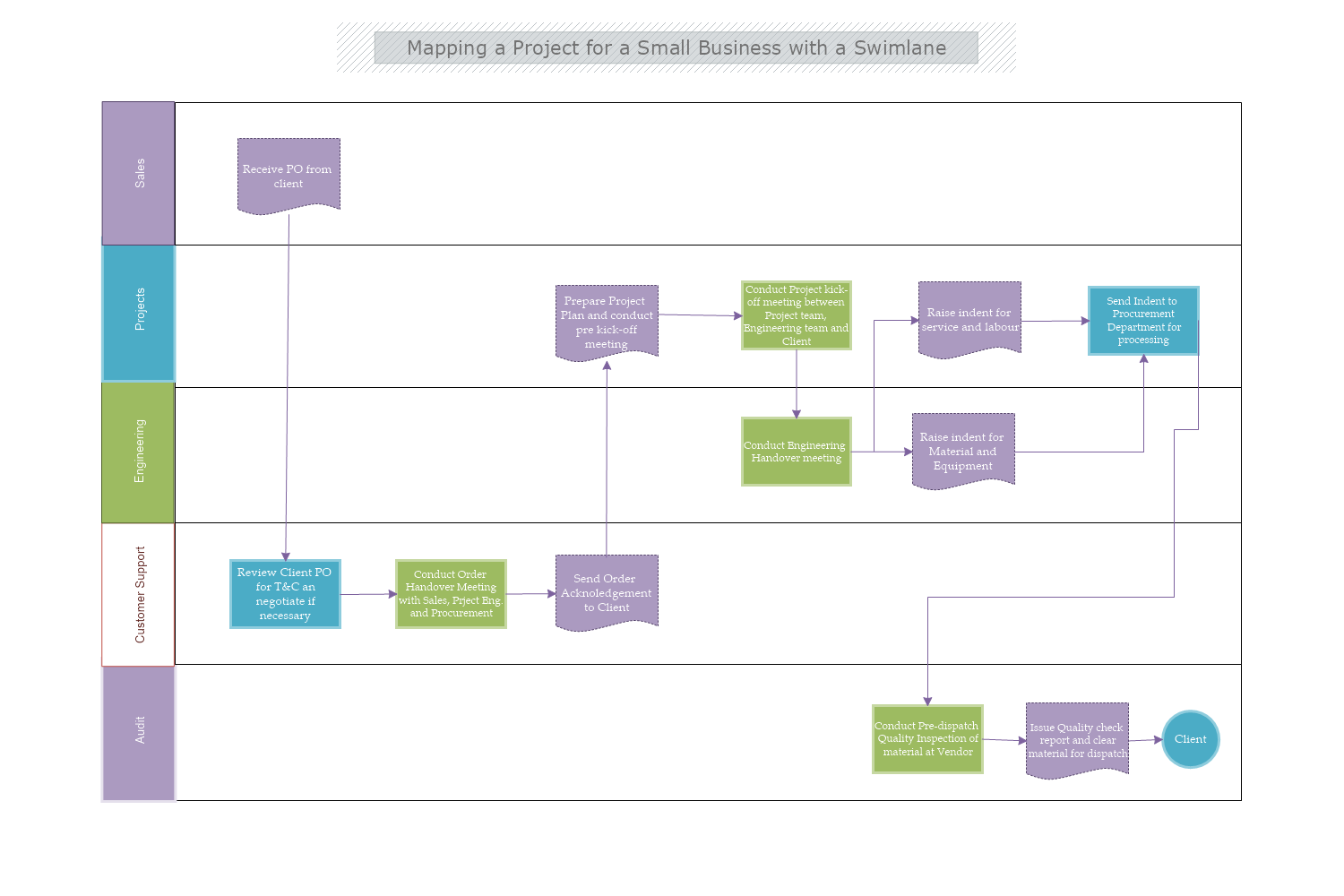This is a Mapping Project for Small Business template that illustrates the project phases for a small business. This cross-functional flow diagram is useful to distribute tasks between teams and improves time management and project deliverables. The template is 100% customizable and you can edit every aspect of it with a few simple clicks in MyDraw.
Download Template:


Download Template:



Project planning involves logical steps of phases, each of which leads to the next.
Following is a list of the included project phases:
- Identify stage- outlining the community problems and structure of the process.
- Design phase- planning and design of a project.
- Implement stage- period for the project- single-year or multi-year implementation period.
- Evaluation of project results- reached goals, acquired results, and if needed further resources or issues to deal with(asses).
- Project monitoring- overseeing the planning, design, and implementation to ensure the project’s success.
Benefits of Project planning
When working with a team on a long-term goal it is always a good idea to have concrete objectives, a period, and mostly a structured plan, so you do not go off the path.
Strategic Planning and Comprehensive Planning
The comprehensive plan is the process of identifying the long-range goals of the community and the obstacles that might come. It also includes methods on how to resolve the problems, a longer period, and ways to measure community progress towards achieving the set goals. Strategic planning, on the other hand, is the actions the group has to take toward developing the communities vision.
S.M.A.R.T. objectives
- Specific — Start with an action verb (strengthen, train, develop, teach, implement) and specify the outcome.
- Measurable — The objective must include measurable outcomes and changes in community conditions (including social, cultural, environmental, economic, and governance conditions).
- Achievable — Most of all they have to be realistic and attainable, given the available resources and project strategy.
- Relevant and Results-oriented—The objective must address the project goal and so the long-term goals of the organization.
- Time-bound — Exact period in which it will be accomplished.
How to come up with your S.M.A.R.T objectives?
Here are some questions to answer:
- What is/are the key areas your organization is seeking to change?
- What part of the population will be taking part?
- What is the direction of the change (increase/improvement or decrease/reduction)?
- What percent/ degree you would like to change?
- What is the deadline or the project period?
Project Development
To consider
- Focus groups
- Community involvement
- Additional funding
